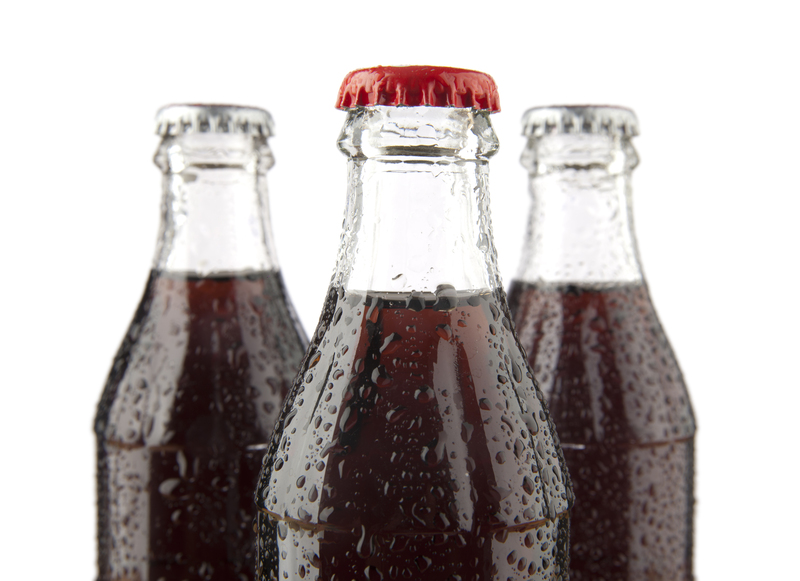Triumph Over Grease: A Streamlined Guide to Clean Enamel Oven Trays
Posted on 30/08/2025
Triumph Over Grease: A Streamlined Guide to Clean Enamel Oven Trays
Regardless of your love for cooking or baking, you're familiar with the post-cooking battle: the messy, greasy enamel oven tray. Over time, grease, burnt-on food, and stubborn stains can seem impossible to remove. To keep your oven performing at its best and your dishes delicious (and smelling fresh), regular cleaning of enamel oven trays is essential. This comprehensive guide unveils proven strategies to clean, maintain, and protect your enamel oven trays--no matter what they've been through.
Why Enamel Oven Tray Cleaning Matters
Clean enamel baking trays aren't just about appearance. The quality of your tray directly affects how your food bakes, roasts, or grills. Here's why you should never ignore a greasy oven tray:
- Better Food Taste: Old grease imparts unpleasant flavors onto your dishes.
- Improved Oven Performance: Clean trays allow even heat distribution, ensuring perfect results.
- Health & Safety: Built-up food particles can harbor bacteria and even cause smoke or fires.
- Tray Longevity: Regular maintenance prevents enamel chipping and rust, extending tray lifespan.
The Anatomy of a Stubborn Grease Layer
Enamel trays are prized for their durability and non-stick properties, but their surface can still succumb to:
- Stubborn Grease (Animal Fats, Oils): Creates a sticky, yellowish film.
- Burnt-on Carbon: Forms when juices splatter and burn during high-heat roasting or grilling.
- Baked-on Food Residue: Hard, black or brown patches that seem fused to the tray.
Understanding these layers helps us tackle them with a targeted, efficient cleaning approach.

Essential Supplies for Cleaning Enamel Oven Trays
Before launching into action, stock up on the right cleaning materials. The following checklist ensures you have everything needed for restoring your oven tray's shine:
- Baking Soda
- White Vinegar
- Lemon Juice
- Dish Soap (Grease-cutting variety)
- Soft Sponges or Microfiber Cloths
- Plastic or Silicone Scraper
- Rubber Gloves (for skin protection)
- Warm Water
- Old Toothbrush
Avoid These to Protect Your Enamel Oven Tray
- No Metallic Scouring Pads: These scratch and damage enamel surfaces.
- No Harsh Chemical Cleaners (e.g., oven spray with lye): Can degrade the enamel and leave harmful residues.
- No Abrasive Powders: They ruin the glossy finish and invite rust.
Step-by-Step Guide to Clean Enamel Oven Trays
Step 1: Rapid Grease Removal - The Soak Technique
- Begin by removing excess food debris with a silicone spatula or plastic scraper.
- Fill your sink or bathtub with hot, soapy water. Add a generous squirt of grease-cutting dish soap.
- Submerge the dirty oven tray fully and allow it to soak for at least 30 minutes--longer for stubborn stains.
- After soaking, gently scrub with a soft sponge. Most grease and loose residue should wipe away easily.
Pro Tip: If your tray is larger than the sink, try soaking one end at a time or use a large storage tub or bathtub for extra capacity.
Step 2: Baking Soda & Vinegar for Deep Cleaning
For enduring stains and burnt-on food, a chemical reaction using baking soda and vinegar is remarkably effective:
- Sprinkle baking soda liberally across the tray, focusing on stained areas.
- Pour or spray white vinegar over the baking soda until it fizzes. Let it fizz and sit for about 10-15 minutes.
- Gently scrub with a soft non-abrasive sponge or cloth in a circular motion.
- Rinse with warm water and inspect. Repeat as needed for persistent spots.
This method removes grease, lifts stains, and neutralizes odors--all without harming the enamel coating.
Step 3: Lemon Juice for Shine & Freshness
- For a final polish, squeeze the juice of half a lemon over the tray and spread with a soft cloth.
- The natural acid in lemons tackles grease and leaves the tray smelling fresh.
- Let it sit for 5-10 minutes, then wash away with hot water and dry thoroughly.
Step 4: Spot-Treating Burnt-On Food
- Apply a thick baking soda paste (mix with a little water) to intensely burnt spots.
- Let it sit for 30 minutes (or overnight for heavy build-up).
- Use a plastic scraper or old toothbrush to *gently* loosen the residue.
- Rinse, wash with soap and water, then dry with a towel.
How to Remove Grease from Enamel Oven Trays Without Damaging the Surface
Preserving the enamel finish is crucial for continued performance. Here's how to avoid the most common cleaning mistakes:
- Always use soft materials: Microfiber, soft sponge, or gentle brushes prevent scratches.
- Never use boiling water: Extreme temperature changes can cause enamel to crack.
- Avoid soaking for excessive periods: While soaking helps, more than 2 hours can risk water getting behind chips or cracks, inviting rust.
- No aggressive scraping: If it doesn't shift after soaking and paste treatment, repeat instead of attacking the surface.
Routine cleaning after every use will keep grease from becoming an epic cleaning challenge!
Eco-Friendly and Natural Cleaning Options
If you prefer green cleaning methods, your enamel oven trays can sparkle without chemicals. Here are eco-friendly solutions:
- Baking Soda & Vinegar: Chemical-free and highly effective, as described above.
- Lemon & Salt Scrub: Sprinkle coarse salt on greasy spots, cut a lemon in half, and use the cut side to scrub gently for stain removal and polish.
- Castile Soap: Add to warm water for tougher grease while remaining gentle on the environment.
- Hydrogen Peroxide Paste (for tough stains): Mix with baking soda for spot-treating discoloration, always rinsing thoroughly after.
These solutions won't just protect your health and home--they're also highly cost-effective over time.
Preventative Maintenance: Keep Enamel Oven Trays Clean for Longer
Wouldn't it be wonderful if your enamel oven baking tray stayed clean for weeks? Here's how to prevent persistent grease and stains:
- Line trays with baking parchment or a silicone mat: Especially for sticky or greasy foods.
- Clean after every use: Even a quick hot rinse and sponge-off prevents build-up.
- Address minor spills right away: If you notice a spill mid-cooking, wipe with a damp cloth as soon as the tray cools slightly.
- Use a tray cover or foil tent: When roasting foods prone to splattering (like fatty meats).
- Store your tray properly: Ensure it's fully dry and never stack heavy objects on the enamel surface.
Tip: For routine cleaning, a dilute white vinegar spray (1:1 with water) is great for wiping down trays and preventing new stains.
Common Mistakes to Avoid When Cleaning Enamel Oven Trays
- Don't use dishwasher for regular cleaning: Intense detergents can dull or etch enamel over time.
- Never preheat a dry, empty tray: This can cause cracks and chips.
- No bleach or ammonia: These harsh chemicals are unsafe for cookware and your food.
- No stacking while damp: Stacking leads to chipping and rust beneath the enamel coating.
How Often Should You Clean Your Enamel Oven Tray?
While deep cleaning depends on usage frequency, follow this guide:
- After every use: Quick soap and hot water clean.
- Weekly (if used heavily): Baking soda and vinegar deep-clean.
- Monthly: Inspect for chips or discoloration. Treat spots immediately to prevent long-term damage.
How to Restore Dull or Damaged Enamel Oven Trays
If your tray already has dull spots or minor chips, act swiftly:
- For dullness: Use a baking soda paste polish, rinse, and buff with a soft cloth.
- For small scratches or cracks: Discontinue use for cooking if food might come into contact with exposed metal. Minor edge chips can sometimes be sealed with food-safe enamel repair kits.
- For deeply scratched or rusty trays: It's safer and more hygienic to replace the tray rather than attempt risky repairs.
Frequently Asked Questions (FAQ) - Triumph Over Grease
Q1: Can you use oven cleaner on enamel trays?
A: It's recommended to avoid regular use of harsh oven cleaners on enamel bakeware. These products are too aggressive and may erode the enamel over time, especially when used repeatedly.
Q2: How do I remove black burnt-on food from an enamel oven tray?
A: Start with a hot soak and dish soap, then apply a thick baking soda paste and let it rest for several hours. Scrape gently with a plastic spatula, repeating as needed. For persistent stains, lemon and salt scrubs or hydrogen peroxide can boost results.
Q3: My enamel tray got chipped. Is it safe to use?
A: Small chips on outer edges may be okay if they do not expose underlying metal in a way that contacts food. Deep chips that expose rust, metal, or increase in size should be sealed or, ideally, the tray should be replaced for safety.
Q4: Can I put my enamel oven tray in the dishwasher?
A: Enamel trays are technically dishwasher-safe, but regular dishwashing can wear down their glossy finish. For best lifespan, hand wash with gentle methods highlighted above.

The Triumph Over Grease: Final Thoughts
Restoring your enamel oven tray to brilliant cleanliness isn't just about tackling tough grease. It's a ritual that protects your investment, enhances your kitchen hygiene, and assures the best tasting meals. By mastering the techniques in this guide--soaking, baking soda scrubs, vinegar washes, and preventative care--you'll triumph over grease every time.
With a few simple tools and habits, your shining enamel oven tray will serve you for years--turning every culinary session into a joy. Say farewell to the dreaded baked-on grime and embrace a kitchen that's as easy to clean as it is to love.
Your Grease-Free Kitchen Awaits!
Don't wait until the next stubborn mess. Use this streamlined cleaning guide the next time you reach for your enamel oven baking tray, and discover how easy it is to beat even the toughest grease. Your future self (and your family's taste buds) will thank you!




